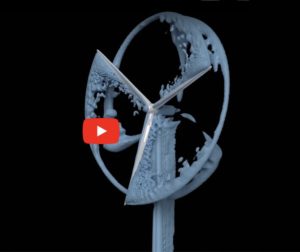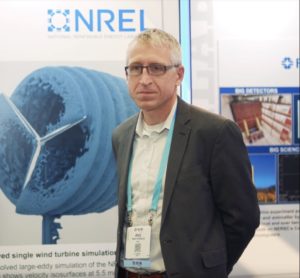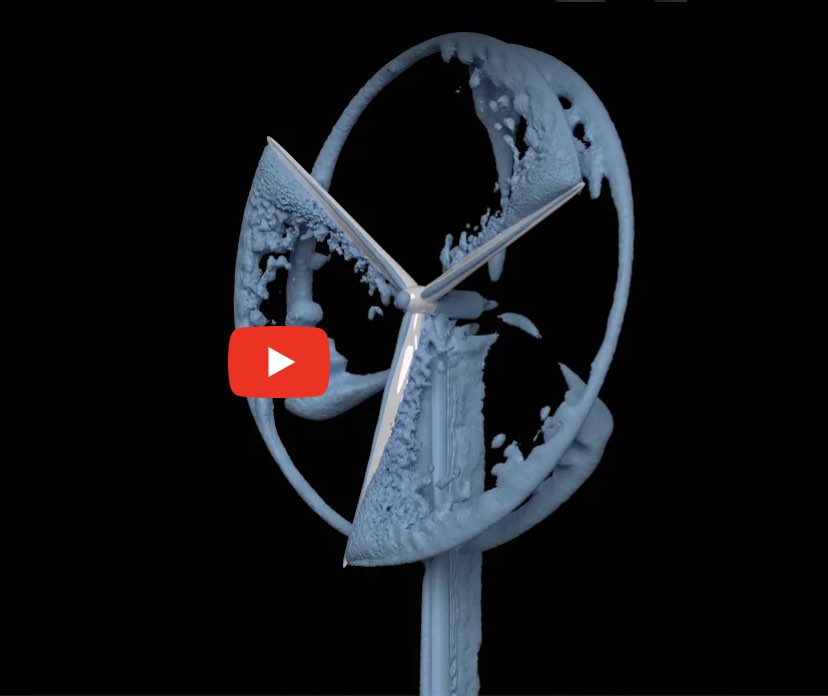 In this video, Scott Gibson discusses the ExaWind project for windmill simulation with Michael Sprague from NREL. ExaWind is part of the ECP, which is building applications that will scale to tomorrow’s Exascale machines.
In this video, Scott Gibson discusses the ExaWind project for windmill simulation with Michael Sprague from NREL. ExaWind is part of the ECP, which is building applications that will scale to tomorrow’s Exascale machines.
A key challenge for wide-scale deployment of wind power without subsidy is making wind farms more efficient. Their performance can be comprised significantly due to complex terrain, unique atmospheric flow phenomena, and the complex air flow interactions that occur in large wind farms.
Sprague goes on to say that is poster shows a simulation involving the NREL 5-megawatt reference or notional turbine. In this context, reference or notional means the turbine does not exist in the field but shares many of the qualities or features contained in a modern wind turbine, especially those located offshore. The simulation, he continued, was one of the project’s first of a turbine of such large size—with a rotor 126 meters long and a hub 90 meters high—using a computational fluid dynamics code called Nalu-Wind on the Cori supercomputer at NERSC.
Sprague also explains why the simulation is important because it demonstrates that the physics models of the ExaWind team will perform well on large computers and paves the way for the team to improve the models and direct simulation capability toward the exascale platform when it’s ready. He added that, ultimately, the team plans to simulate tens of large turbines within a large wind farm.

Michael Sprague of the National Renewable Energy Laboratory (NREL) is leading several computational science projects in wind energy, including a US Department of Energy Exascale Computing Project (ECP) effort called ExaWind.
Dr. Michael Sprague joined the Computational Science Center at NREL as a senior scientist in 2010. As a graduate student, he developed a parallel spectral finite element method for treating the interaction of large marine structures with an acoustic fluid subject to cavitation. He spent 2 years as an NSF-VIGRE postdoctoral fellow in Applied Mathematics at the University of Colorado at Boulder, working on rotationally constrained convection, which has application to ocean deep convection. Before coming to NREL, Dr. Sprague spent 5 years as assistant professor and founding faculty in applied mathematics at the University of California, Merced. There he was the faculty lead in developing the new graduate program in applied mathematics.




